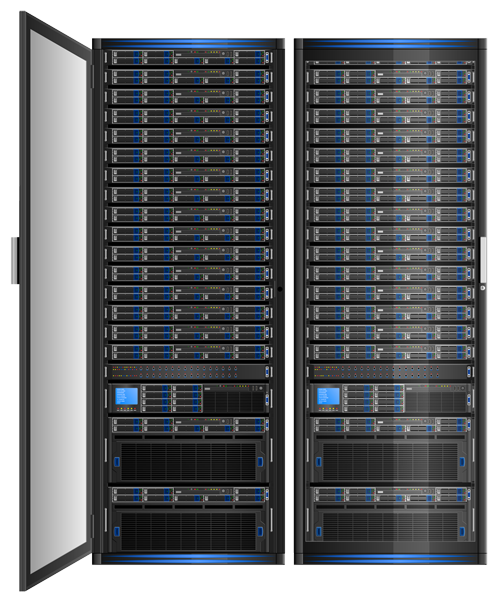Course Details
Overview
DCICN 1.0 – Introducing Cisco Data Center Networking helps prepares the learner for a CCNA Data Center exam certification. It covers the Cisco Data Center networking components and technologies.
Objectives
Upon completing this course, you will be able to meet these overall objectives:
- Describe how a network works
- Configure, verify, and troubleshoot a switch with VLANs and interswitch communications
- Implement an IP addressing scheme and IP services to meet network requirements
- Configure, verify, and troubleshoot routing operations on Cisco Nexus switches
Outline
Module 1: Simple Network Design
- Understanding the Functions of Networking
- What Is a network?
- Common Physical Components of a Network
- Interpreting a Network Diagram
- Resource-Sharing Functions and Benefits
- Network User Applications
- Impact of User Applications on the Network
- Characteristics of a Network
- Physical Topologies
- Connection to the Internet
- Understanding the Host-to-Host Communications Model
- Understanding Host-to-Host Communications
- OSI Reference Model
- OSI Model Layers and Their Functions
- Encapsulation and De-Encapsulation
- Peer-to-Peer Communication
- TCP/IP Suite
- Describing Ethernet Connections
- Ethernet LAN Hardware
- Ethernet Transceivers and Cables
- UTP Implementation
- Describing Ethernet Communications Standards
- Definition of a LAN
- Components of a LAN
- Functions of a LAN
- Ethernet
- Ethernet LAN Standards
- Role of CSMA/CD in Ethernet
- Ethernet Frames
- Ethernet Frame Addressing
- Ethernet Addresses
- MAC Addresses and Binary-Hexadecimal Numbers
- Describing OSI Network Layer Addressing
- IP Overview
- IP Addressing
- Public and Private IP Addresses
- DHCP Method
- Domain Name System
- Using Common Host Tools to Determine the IP Address of a Host
- Describing the TCP/IP Transport Layer
- Transport Layer Functions
- Reliable vs. Best–Effort
- UDP Characteristics
- TCP Characteristics
- TCP/IP Applications
- Mapping Layer 3 to Layer 4
- Mapping Layer 4 to Applications
- Establishing a Connection with a Peer System
- Flow Control
- TCP Acknowledgment
- Windowing
- TCP Sequence Number and Acknowledgment Numbers
- Describing the Packet Delivery Process
- Layer 1 Devices and Their Function
- Layer 2 Devices and Their Function
- Layer 2 Addressing
- Layer 3 Devices and Their Function
- Layer 3 Addressing
- Mapping Layer 2 Addressing to Layer 3 Addressing
- ARP Table
- Host-to-Host Packet Delivery
- Function of the Default Gateway
- Using Common Host Tools to Determine the Path between Two Hosts across a Network
Module 2: Switched Network Implementation
- Describing Switching
- Understanding the Challenges of Shared LANs
- Solving Network Challenges with Switched LAN Technology
- Describing the Packet Delivery Process
- Layer 2 Addressing
- Layer 3 Addressing
- Host-to-Host Packet Delivery
- Describing Cisco NX-OS Software
- Cisco NX-OS Software Architecture
- Cisco NX-OS Process Recovery
- Operating Cisco NX-OS Software
- Describing the Features of the CLI
- Identifying the Help Functions of the CLI
- Describing the Startup Characteristics of the Switch
- Describing Configuration Management
- Implementing VLANs and Trunks
- Understanding VLANs
- Understanding Trunking with 802.1Q
- Understanding VTP
- Configuring VTP, Trunks, and VLANs
- Building a Redundant Switched Topology
- Recognizing Issues of a Redundant Switched Topology
- Resolving Issues with STP
- Describing 802.1w RSTP
- Describing 802.1s MSTP
- Describing LAN Port Channels
- Verifying LAN Port Channels
Module 3: IP Addressing
- Describing an IP Addressing Scheme
- Describing Routing
- Understanding Numbering Systems
- Constructing a Network Addressing Scheme
- Transitioning to IPv6
- Reasons for Using IPv6
- Understanding IPv6 Addresses
- Assigning IPv6 Addresses
- Strategies for Implementing IPv6
Module 4: Routing on the Cisco Nexus Switch
- Exploring the Packet Delivery Process
- Host-to-Host Packet Delivery
- Cisco NX-OS Tools
- Exploring the Routing Process on Cisco Nexus Switches
- Traditional Inter-VLAN Routing
- Multilayer Switching
- Routing Tables
- Distance Vector Routing Protocols
- Link-State Routing Protocols
- Exploring Routing Protocols on Cisco Nexus Switches
- Routing Information Protocol
- Open Shortest Path First
- Enhanced Interior Gateway Routing Protocol
- Exploring ACLs on Cisco Nexus Switches
- Understanding ACLs
- ACL Processing
- Configuring ACLs
- Understanding Object Groups
Course Labs
Lab 1-1: Using Windows Applications as Network Tools
Lab 1-2: Observing the TCP Three-Way Handshake
Lab 1-3: Observing Extended PC Network Information
Lab 2-1: Connecting to Cisco Nexus Switches
Lab 2-2: Configuring Cisco Nexus Switches
Lab 2-3: Configuring VLANs and Trunks
Lab 2-4: Verifying and Configuring Spanning Tree
Lab 2-5: Configuring EtherChannel
Lab 3-1: Converting Decimal to Binary and Binary to Decimal
Lab 3-2: Classifying Network Addressing
Lab 3-3: Computing Usable Subnetworks and Hosts
Lab 3-4: Calculating Subnet Masks
Lab 4-1: Configuring Multilayer Switching
Target Audience
- Channel Partner / Reseller
- Customer
- Employee
Pre-Requisites
The knowledge and skills that you must have before attending this course are as follows:
- Basic computer literacy
- Basic knowledge of Microsoft Windows operating systems
- Basic Internet usage skills


